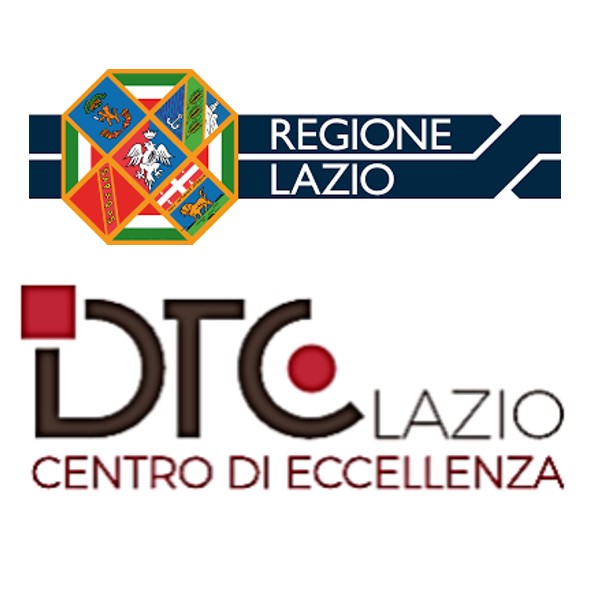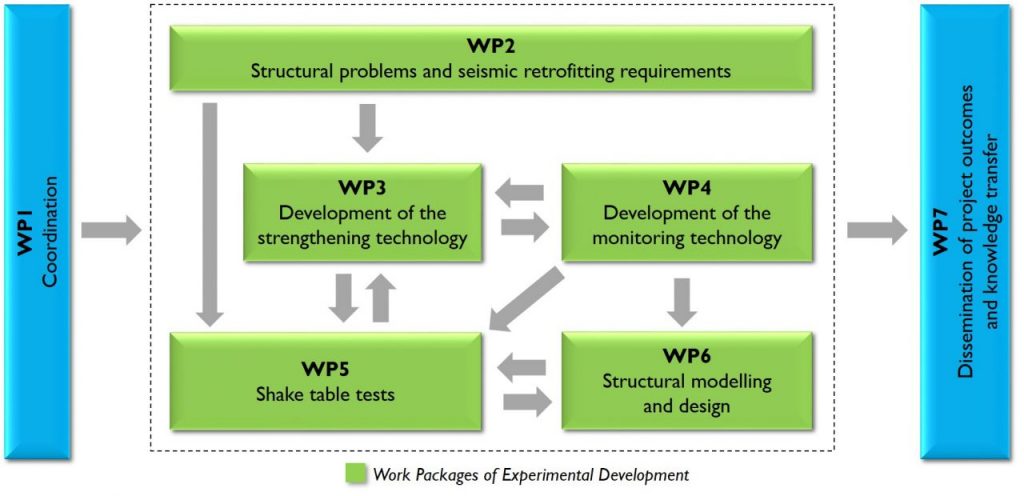Description of the project
Project goals
The project aims at achieving the following goals:
- To develop an innovative, effective and sustainable system for seismic retrofitting of masonry buildings, that is suitable for applications to architectural heritage;
- To develop an innovative structural strengthening solution which integrates a monitoring system with optical fibers, allowing for timely and targeted maintenance works, and ensuring its control and effectiveness over time at sustainable costs;
- To provide technical-scientific support to the development activities of industrial partners, contributing to the growth of their competitiveness, supporting them in the process of ever greater affirmation in the market, in a strategic sector such as that of the structural rehabilitation of the architectural heritage, leveraging their distinctive skills to acquire a competitive advantage on the national and international scene;
- To improve the knowledge on the seismic behavior of stone masonry constructions and demonstrate the effectiveness of the proposed technology through an experimental investigation on the shake table;
- To develop advanced structural modeling methodologies and expeditious design criteria, to foster the transfer of knowledge to engineering practice;
- To support post-earthquake reconstruction activities, through an active involvement of local communities, citizen associations and administrations, with positive economic impacts in terms of production activities and tourist attraction;
- To encourage the education of young researchers, the creation of networks with other national and international research projects and technical-scientific committees, and the interaction between researchers, industry, institutions and practitioners for a conscious approach to safeguarding the architectural heritage, through activities of technical-scientific dissemination.
Structure of the project
RIPARA will last 18 months and will be organized in 7 Work Packages (WP) coordinated with each other and organized from a temporal point of view to effectively use the results of each WP to achieve the scientific and innovation objectives technology and project transfer.
- WP1 Coordination, to ensure an efficient development of activities and a positive interaction between partners, monitor the progressive achievement of objectives and the production of deliverables, and manage general matters relating to expenses and their review.
- WP2 Structural problems and seismic retrofitting requirements, to create a database of the recurring masonry typologies and the main construction details, with 3D digital models, downloadable and consultable, obtained by means of a fast digital photogrammetric survey, on a case study. The main problems of the seismic behavior of masonry buildings will be highlighted, with particular reference to the building types of the Lazio Apennines and Central Italy. The work will focus on the fundamental requirements of seismic retrofitting, and will foster the involvement the communities and local administrations in the project activities.
- WP3 Development of the strengthening technology, to develop an innovative technology for the seismic improvement of the architectural heritage, starting with the CAM® technique, with minimal impact and without compromising the architectural value. The equipment necessary for the implementation of innovative reinforcement technology will be also developed, to ensure its fast and effective use on construction sites.
- WP4 Development of the monitoring technology, to design a monitoring system integrated with the proposed reinforcement technique and to develop a methodology for identifying damage in pre- and post-intervention conditions.
- WP5 Shake table tests, to study the seismic behavior of stone walls, and to validate the seismic reinforcement technology proposed in the project, and the integrated monitoring system proposed in the project.
- WP6 Structural modeling and design, to develop advanced modeling techniques for the structural analysis of masonry constructions, with and without the application of the innovative reinforcement systems developed in the project, and validate them based on the results of seismic tests on a vibrating table. Expeditious formulations will be also developed for the analysis of local mechanisms in the presence of innovative reinforcement interventions. Finite element software will be developed, that are suitable for use in design practice, for modeling and for analyzing the response of structures in the presence of innovative reinforcement systems.
- WP7 Dissemination of project outcomes and knowledge transfer, which will define a strategy and coordinate the dissemination and transfer of results, establish and foster connections with institutions and other research projects, and take care of dissemination activities in the press and to the public.



